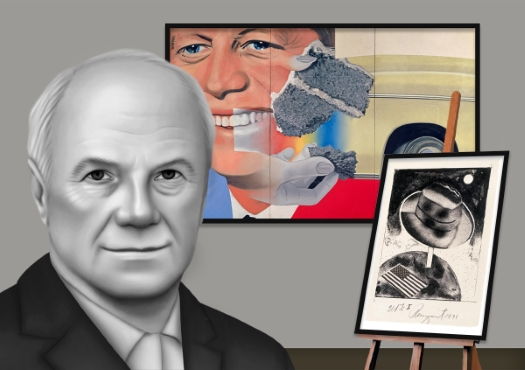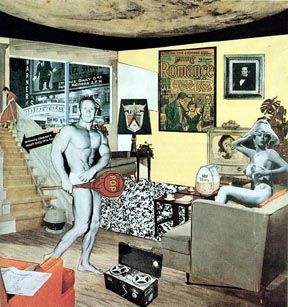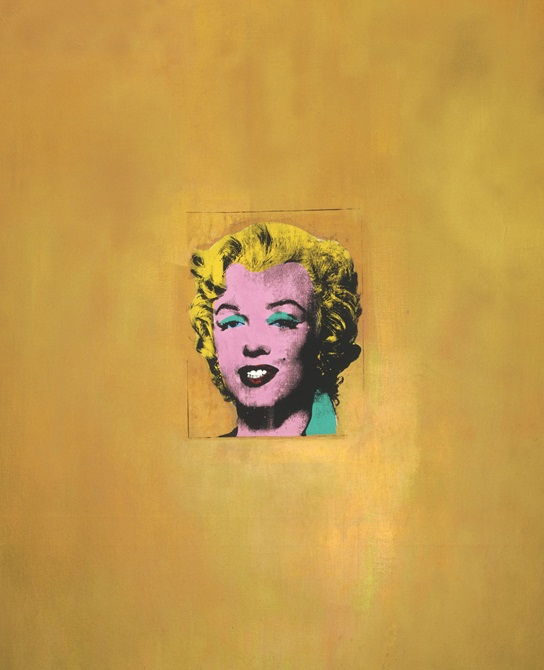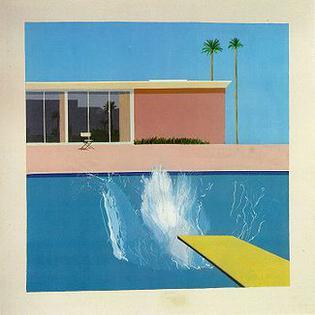Summary of James Rosenquist
A seminal figure in the Pop art movement, James Rosenquist is best known for his colossal collage paintings of enigmatically juxtaposed fragmentary images borrowed largely from advertisements and mass media. Brought together and enlarged so as to cover entire gallery walls and overwhelm the viewer, these seemingly unrelated pictures of consumer products, weaponry, and celebrities hint at the artist's social, political, and cultural concerns. The billboard painter-turned-artist's early works are also considered emblematic of a burgeoning consumer culture in America during the 1960s. For six decades Rosenquist created massive, provocative paintings, whose continued relevance hinges on their engagement with current economic, political, environmental, and scientific issues.
Accomplishments
- The artist was among the first to directly address the persuasive, even deceptive, powers of advertising by applying the Surrealist practice of juxtaposing seemingly unrelated subjects to fragmented commercial images and ads in a manner that highlights the omnipresence of ads.
- An advocate for his fellow artists, Rosenquist used his prominent artistic reputation to help lobby for federal protection of artists' rights during the 1970s and was soon thereafter appointed to the National Council on the Arts.
- Because he successfully moved beyond his early fascination with popular culture and mass media to address new issues, such as the intersection of science and aesthetics, Rosenquist is credited with being one the few Pop artists whose later work continues to be relevant.
The Life of James Rosenquist
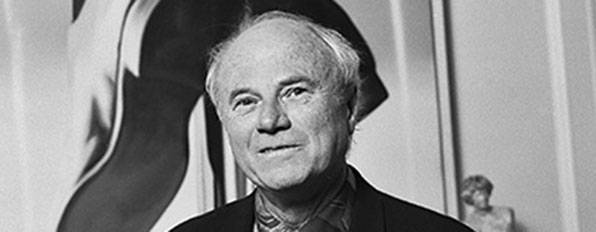
Rosenquist started out by painting advertising imagery for others, but found his success in producing his own, similarly large scale, images. He said "I feel lucky that I've been able to make a living from painting any idea that comes into my head."
Important Art by James Rosenquist
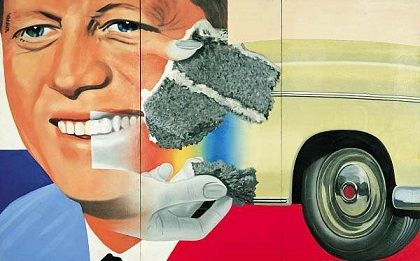
President Elect
Like many Pop artists, Rosenquist was fascinated by the popularization of political and cultural figures in mass media. In his billboard-style painting President Elect, the artist fuses Madison Avenue caliber advertising with political ambition by depicting John F. Kennedy's smiling face alongside consumer items - namely, a yellow Chevrolet and a slice of cake from an ad. Rosenquist created the collage using images cut from their original context that he adapted to fit a monumental scale in a photo-realistic style. As Rosenquist explains, "The face was from Kennedy's campaign poster. I was very interested at that time in people who advertised themselves. Why did they put up an advertisement of themselves? So that was his face. And his promise was half a Chevrolet and a piece of stale cake."
Considered the artist's breakthrough work, President Elect speaks to Rosenquist's fascination with subliminal persuasion through advertising. Rosenquist had a strong interest in the imagery of advertising, and wanted to translate its power into his artwork: "Painting is probably much more exciting than advertising," he said, "so why shouldn't it be done with that power and gusto, with that impact." This large-scale work exemplifies Rosenquist's technique of combining discrete images through techniques of blending, interlocking, and juxtaposition, as well as his skill at including political and social commentary using popular imagery. By placing Kennedy, the first presidential candidate to harness mass media to benefit his campaign, in the same frame as a sleek, powerful 1949 Chevy and dainty fingers caressing cake, the artist suggests the three subjects are similarly neatly packaged, marketed as desirable, and sold to the American people. At the same time, here Kennedy becomes a symbol of post-war American abundance.
Oil on masonite - Centre Georges Pompidou, Paris
F-111
The most ambitious of Rosenquist's collage paintings, F-111 stretches 86 feet long across 23 canvas panels and aluminum sections, encompassing a viewer's entire field of vision. The painting depicts a full-scale, 73 foot long F-111 fighter plane interrupted by assorted images derived from billboards and advertisements of the day rendered large and in clashing, day-glo colors. Among the fragmentary advertisements are a tire, a cake, air bubbles, spaghetti, a light bulb, and a young girl using a hair dryer that resembles a missile head. Disturbingly, there is also a beach umbrella juxtaposed onto an atomic explosion, making reference to a particular military euphemism used at the time: "nuclear umbrella."
Created during the Vietnam War, F-111 mixes fragments of consumer advertising (of the sort and scale that Rosenquist had become familiar with in his earlier career as a billboard painter) with military imagery, evoking what President Dwight Eisenhower warned of in his departing 1961 address as "the military-industrial complex." Indeed, the F-111 bomber represented the latest technological innovation in warfare and cost millions to develop. In an interview, Rosenquist imagined a man who "has a contract from the company making the bomber, and he plans his third automobile and his fifth child because he is a technician and has work for the next couple of years....the prime force of this thing has been to keep people working, an economic tool; but behind it, this is a war machine." By offering a vision of this jet, as Rosenquist described it, "flying through the flak of consumer society to question the collusion between the Vietnam death machine, consumerism, the media, and advertising," F-111 suggests complicity between this "war machine" and consumer culture.
F-111 was originally designed to cover all four walls of the Leo Castelli Gallery's main room in Manhattan. Its size permits no vacant wall space to offer visual relief from the bombardment of fragmentary images. As such, it exemplifies Rosenquist's contribution to Pop art: grand scale collage paintings that encompass an amalgamation of consumer imagery in a manner suggestive of socio-political commentary. After its purchase in 1967, F-111 toured major institutions in Europe and was exhibited at the Venice Biennale in 1978, significantly bolstering Rosenquist's artistic reputation abroad.
Oil on canvas with aluminum, twenty-three sections - The Museum of Modern Art, New York
Marilyn Monroe, I
James Rosenquist painted this inverted and fragmented portrait of Marilyn Monroe just following her unexpected death in 1962. Like fellow Pop artist Andy Warhol, Rosenquist transformed Marilyn's iconic image. But whereas Warhol used well-known photographs of the celebrity sex symbol repetitiously, Rosenquist chose to present her in a manner that denied immediate recognition, while preserving her coquettishness. He achieved this by breaking apart her eyes, lips, and hand, reassembling the pieces into a seemingly random configuration, and boldly overlaying letters that are themselves fragments of her name.
Below the lettering appears a fragment of the word "Coca-Cola" in the soda's trademark script. Through this association with branding, mass-production, and popular culture, the artist draws attention not so much to Monroe as a person as to how she was packaged in the mass media and marketed based on her sex appeal, here synecdochically referred to through images of her smiling mouth and attractive blue eyes artistically repackaged. Rosenquist's painting of Marilyn Monroe is one of countless others painted by his contemporaries, including Andy Warhol and Willem de Kooning, that attest to the increasing power of mass media and its impact on art production during the 1960s.
Oil and spray enamel on canvas - The Museum of Modern Art, New York
House of Fire
In this painting, Rosenquist utilizes tropes from the visual rhetoric of advertising to create a triptych that features a bag of groceries, a glowing bucket, and cosmetics. Highly dynamic, the painting appears to depict a moment frozen in time, just before the grocery items fall out of the upside-down bag. The image is also a sensuous one, with the lipsticks exhibiting a high-gloss shine that resembles contemporary adverts for cars. And yet, these everyday objects simultaneously warn of impending danger.
Here aggression infiltrates the domestic sphere. The upside-down groceries threaten to drop like bombs, and the projecting lipsticks resemble a battery of missiles. Similarly, the red bucket interwoven with the window at center appears to be glowing as though filled with the same molten steel used to cast weapons. These threatening objects, painted over a red hot backdrop and ominously titled House of Fire warns against being taken in by advertising and, worse still, the danger posed to society when horrifying news bulletins are interspersed among seemingly innocent commercials. Although smaller than the majority of Rosenquist's large paintings, at only 16.5 feet wide, this painting shares themes of sexuality, violence, and consumerist impulses that are typical of the artist's work. But unlike his earlier collage paintings from the 1960s, this composition is more orderly in its juxtaposition of fragmented images, exemplifying the clearer iconography and more coherent narrative to be found in Rosenquist's mid-career work. The artist created a series of 54 prints after this image in 1989.
Oil on canvas - The Metropolitan Museum of Art, New York
The Serenade for the Doll after Claude Debussy, Gift Wrapped Doll #16
This painting, one of 12 in this series exhibited at the Leo Castelli Gallery in 1993, presents a partial frontal view of a doll wrapped in cellophane. Painted on a large scale (60 x 60 inches), the doll speaks to the innocence of childhood, while its wide-eyed expression suggests surprise or fright, as if being suffocated by the cellophane that distorts its features. The effect is disconcerting for the viewer and reminiscent of the deep human understanding that dolls can be both comforting and frightening. The work follows in a tradition of art made with dolls, and particularly references the Surrealist fascination with dolls and toys evident in the work of artists such as Hans Bellmer.
The title refers to a work by French composer Claude Debussy, whose musical composition Serenade of the Doll was written for his daughter. Indeed, Rosenquist's painting was inspired in large part by his own experience as a father raising his then young daughter Lily. However, Rosenquist's work is not so much an examination of childhood as a statement about the world that his daughter will inhabit. Of particular concern to Rosenquist when creating this series, was the AIDS crisis and how it would affect innocence, love, and relationships in his daughter's generation. The artist claimed that the doll paintings were "a result of my feelings about the child who has to look forward to the difficulty of relationships because of AIDS. The coolness, thoughtfulness that will be in a young romance make it seem the complete antithesis of passion." Just so, Rosenquist depicts the doll contained and controlled within its wrap. An allusion to parental anxiety, the cellophane wrap both protects and inhibits, restricts, and even smothers the doll. Earlier works by Rosenquist, also convey his concern for the wellbeing of future generations. Consider, for example, the young girl beneath a missile-shaped hair dryer in F-111. But the artist, now a father, communicates that paternal worry more overtly in Gift Wrapped Doll.
Oil on canvas - The Metropolitan Museum of Art, New York
The Swimmer in the Econo-mist (Painting I)
Brightly colored forms, astronomical imagery, and distinctive logos from advertisements and commercial package designs become distorted as they swirl around vortices in The Swimmer in the Econo-mist (Painting I). One of a series of three enormous collage paintings and one of the larger compositions at 11 x 90 feet, this work, according to Rosenquist, is a "diary of the terrible temper of the times," of the technological, economic, and political changes that have shaped the past century. It is also full of references to works from Rosenquist's earlier career. In addition to employing tropes such as swirling vortices and interwoven fragmented imagery, the artist also included the missile-shaped hair dryer from F-111, though the blonde girl beneath it is absent. Rosenquist explained, "the little girl who was the pilot of the F-111 is now the heiress who controls Wall Street." Also prominent is a portion of Pablo Picasso's famous anti-war painting, Guernica, which he created in response to the Nazi bombing of Spain during the Spanish Civil War. Instantly recognizable, a broken version of the painting appears to be caught up in the whirling "econo-mist" - a term that refers to the extensive and ever-changing cultural and economic systems in contemporary society.
The series was originally commissioned in 1992 for the Deutsche Guggenheim Museum in East Berlin. The reunification of Germany was underway and this marked an earlier effort to bring art into the culturally deprived (former) East Germany following the fall of the Berlin Wall in 1989. The large scale, rectangular painting wrapped around walls of a gallery on Unter den Linden. Rosenquist used the series in part to contemplate his place as an artist and individual at the end of the 20th century, a time of both tragic violence and vibrant abundance. The reappearance in this painting of images from his earlier work attests to that. Vortices of swirling chaos hurtle those fragments of consumer products, weaponry, cultural imagery, and abstract forms toward the far end of the composition, where the German flag emerges as a sun rising. Here, Rosenquist reminds the viewer of Germany's tragic past, but also suggests its promising future.
Oil on canvas - The Solomon R. Guggenheim Museum, New York, New York
Stowaway Peers Out of the Speed of Light
During the late 1990s, Rosenquist began incorporating abstraction into his billboard-size collage paintings. Stowaway Peers Out of the Speed of Light features brightly colored, distorted, and compressed forms whirling through space amidst layers of sleek, reflective vortices. The seemingly chaotic composition is part of the Speed of Light series, which explores vision in motion. Inspired by Albert Einstein's theory of relativity and the speed of light, Stowaway addresses how people see and understand the same image differently. Rosenquist explained: "In Einstein's study of the speed of light, apparently the speeding person looks out of the window [sic], and the view is altered because of the tremendous speed. And then the spectator, watching the speeding person - the look of that is also altered. Things are crammed together, and they're foreshortened. It's a pun, really. Like the difference between the artist and the critic, how different people see different things."
Although the Rosenquist's process of creation remains the same, this painting attests to the artist's rediscovered admiration for the gestural paintings of Abstract Expressionists Jackson Pollock and Willem de Kooning. This transition from focusing exclusively on the mass media and consumer imagery of his earlier career to addressing intersections between science and aesthetics lends Rosenquist's later work new relevance. He continues to hearken back to his career as a billboard painter, but with different results. "Underneath it all is all my experience," the artist says of the series. "The paintings are about my imagination as to a new view, or a new look at the speed of light. And they also have to do with the whole history of my experience put into a painting."
Oil on canvas - Collection of the Artist
Biography of James Rosenquist
Childhood
James Rosenquist, born in North Dakota, was the only child of amateur pilots Ruth and Louis Rosenquist. His father's search for work repairing planes meant that the family moved frequently, particularly during World War II, occasionally sending Rosenquist to stay with his grandfather on his farm near Mekinock, North Dakota. When the war concluded, the family settled in Minneapolis. By then, Rosenquist had lived in five different towns and attended seven different schools, all the while working during his summers and after school collecting newspapers, selling ice cream, picking seasonal produce at his grandfather's farm, and making deliveries for a local drug store.
Throughout these years, Rosenquist's mother, also an amateur painter, nurtured her son's budding creativity by taking him to visit art schools and museums whenever she could. Paper was hard to find, but young Rosenquist made do by drawing on rolls of discarded wallpaper. While his parents were away working, the artist sketched large battle scenes, cars, airplanes, and boats, honing his abilities. In eighth grade, Rosenquist's watercolor of a sunset won him a scholarship for four free classes at the Minneapolis School of Art (now Minneapolis College of Art and Design). While there, he was exposed to "real artists" - veterans who had studied art in Paris after World War II.
Early Training
Rosenquist's formal art training began in 1952 when he matriculated to the University of Minnesota and studied under painter Cameron Booth. An American Abstract Expressionist who had studied in France under the guidance of renown German painter Hans Hofmann, Booth introduced his students to modern and contemporary art movements and took them to exhibitions at the Art Institute of Chicago.
During his first summer at the university, Rosenquist began working as a commercial sign painter, traveling throughout Minnesota and Iowa for various jobs. Although today most signs are printed, in the 1950s billboards were painted by hand, a job that took a good deal of skill and considerable effort. Rosenquist painted large-scale signs based on small pictures he was given so that the image could be seen from far away - even from a moving car. Commercial sign painting, a job that would have a long-term impact on his art, did not however, deter the artist from creating Abstract Expressionist paintings at school. Rosenquist considered Action Painting particularly heroic, admiring what he described as "splashing your psyche on the canvas."
This began to change in 1955, when, at Booth's suggestion, the artist enrolled in the Art Students League in New York City. Rosenquist later recalled that Booth "was a man of the world, he'd taught all over. He told me to get out of the Midwest and to go to New York." There Rosenquist studied with Will Barnet, Vaclav Vytlacil, and George Grosz. The artist also interacted with members of the Beat Generation literary scene, such as Jack Kerouac and Allen Ginsberg.
Rosenquist experienced a cultural jolt upon moving to New York - one that altered his outlook on wealth and consumerism: "My life changed drastically. I was like a young bum. I had no money. I lived really poorly. I walked everywhere. The luxury of being in a car was amazing."
When he was not in his studio creating small works in the Abstract Expressionist style, Rosenquist was perched atop scaffolding high overhead painting billboards. For Rosenquist, sign painting was more than a way to earn some cash. Painting alongside veteran sign painters who offered tips on coloring and perspective constituted a modern version of working in an old master's workshop. In the artist's words: "I felt as if the craft of traditional painting had gotten mislaid; you no longer learned your trade from a master painter, but from books and classes, and it occurred to me that looking for art at an art school was like looking for your wallet under a streetlamp when you hadn't lost it there." As a sign painter, Rosenquist experimented with color, learned how to manipulate paint to mimic other media (such as film), and developed an interest in the impact and prevalence of advertising in American culture. After quitting his job in 1960 when a fellow sign painter fell to his death, Rosenquist applied all he had learned to his canvas paintings.
Mature Period
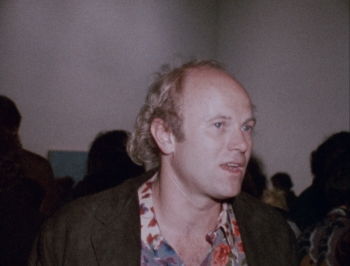
1960 was an important year for James Rosenquist. After marrying textile designer Mary Lou Adams, the artist began renting a small studio in Coenties Slip, an area of lower Manhattan popular among emerging artists at the time. His neighbors included Robert Indiana, Agnes Martin, and Ellsworth Kelly. Working in this new studio space, Rosenquist began to reconsider his approach to painting. The Abstract Expressionist style he so admired for its intensity and its success in making New York City the new center of the art world during the early 1950s was, by 1960, running on fumes. According to Rosenquist, "Abstract Expressionism had become this corny-looking habit...What had been brilliant and incisive in the 1940s and early fifties had become idiot-like and romantic...Everyone was searching to get down to absolute zero, to just color and form, and the only way I knew to do that was to start using imagery again, to paint specific things that couldn't be confused with something else."
The artist turned instead to a new realism and to the techniques that he had developed through billboard painting. Working on a massive scale, Rosenquist painted brightly colored, fragmented pictures from the commercial realm, creating collages that comment on the socio-political and economic climate of America. Collectors and influential gallery owners like Richard Bellamy and Leo Castelli began to show interest in Rosenquist's new paintings. His work made him a pioneer of Pop art in 1962 when his first solo exhibition at the Green Gallery in New York sold out at approximately the same time that two other like-minded artists, Andy Warhol and Roy Lichtenstein, held similarly successful and groundbreaking shows. Rosenquist remembered: "They called me a Pop artist because I used recognizable imagery. The critics like to group people together. I didn't meet Andy Warhol until 1964. I did not really know Andy or Roy Lichtenstein that well. We all emerged separately."
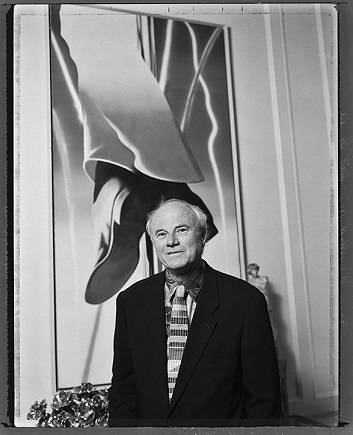
Fame came quickly to Rosenquist. The artist seemed to be in as high demand as were his large-scale paintings. Rosenquist remembers one evening in particular, during which he dined with Surealist painter Salvador Dalí, one of his idols, and Jeff Koons. Rosenquist ordered asparagus and, according to Koons, Dalí placed the vegetable on his head for the entire meal. Dalí's absurd behavior (for which he had a reputation) amused the artists in his company. Rosenquist, having been catapulted into the upper echelons of New York's art scene, enjoyed such engagements. His fame continued to grow and in 1987 he was admitted to the American Academy and Institute of Art and Letters in New York.
Late Period
Rosenquist's commissions often took him away from New York City. In the 1970s, the artist began work on two murals for the State of Florida. He set up a studio in Ybor City before commissioning a house and studio from architect Gilbert Flores in 1976. This new workspace in Aripeka allowed more room for his large canvases.
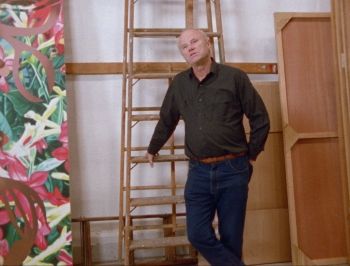
During this time, Rosenquist also became politically involved; lobbying the government in 1974 for better legislation to protect artists' rights and protesting the Vietnam War. Paintings created during this decade reflect his political concerns, as well as his fascination with technology, modern innovations, and their sometimes conflicting relationship with nature. By 1980, ecological issues had begun to concern Rosenquist, as evidenced in his series depicting local tropical flora. And by the 1990s, his fascination with space and time had become a dominant theme, echoing the fashion for science fiction in other areas of popular culture. In addition to painting, Rosenquist also produced large-scale prints. His 1992 work Time Dust is thought to be the largest print ever made, measuring 86 x 420 inches.
Throughout his career, one characteristic has remained constant - the artist's fascination with chaos. Fragmented images overlap, collide, and swirl across massive canvases that overwhelm the gallery space they occupy and the viewers who enter that space. Sadly, in 2009, a fire gutted Rosenquist's home and studio in Aripeka, Florida, destroying the majority of his work held there. Among the work destroyed was a huge mural that would have measured a massive 133x24 feet upon completion.
The fact that he has outlived so many of his colleagues, saddened Rosenquist: "They're not around, they're dead. D-E-D, dead. Roy [Lichtenstein], Andy, Dan Flavin, Don Judd. I hate it." Many of the artist's paintings are now commissioned by corporations or purchased by private collectors. Every composition is meaningful and finished to the highest possible quality no matter its intended destination. Rosenquist insisted to his last days: "I never let anything go out of my studio if I don't think it has something, an essence, because it could wind up in a museum."
The Legacy of James Rosenquist
James Rosenquist's irreverent and at times surreal appropriation of popular culture and the materials and techniques of advertising inspired several other artists. For example, Richard Prince's photographic use of advertisement imagery demonstrates Rosenquist's influence, as do Marilyn Minter's ad-inspired paintings. Rosenquist's legacy has impacted many contemporary artists, such as Jeff Koons, whose vibrant works often echo the huge scale and incorporation of popular imagery and advertisements characteristic of Rosenquist's paintings. His significance to modern art is assured, but Rosenquist himself was unconcerned about how or if he will be remembered after death: "You live till you die, and that's the end of it. What good is your legacy when you are dead? I worry about being alive, selling work, having fun, moving and doing things when I am alive."
Influences and Connections

-
![Surrealism]() Surrealism
Surrealism -
![Pop Art]() Pop Art
Pop Art ![Contemporary Art]() Contemporary Art
Contemporary Art
-
![Richard Prince]() Richard Prince
Richard Prince ![Marilyn Minter]() Marilyn Minter
Marilyn Minter
-
![Pop Art]() Pop Art
Pop Art ![Neo Pop Art]() Neo Pop Art
Neo Pop Art
Useful Resources on James Rosenquist
- James Rosenquist: A RetrospectiveBy Sarah Bancroft
- Rosenquist: Painting Below ZeroOur PickBy James Rosenquist and David Dalton
 Ask The Art Story AI
Ask The Art Story AI